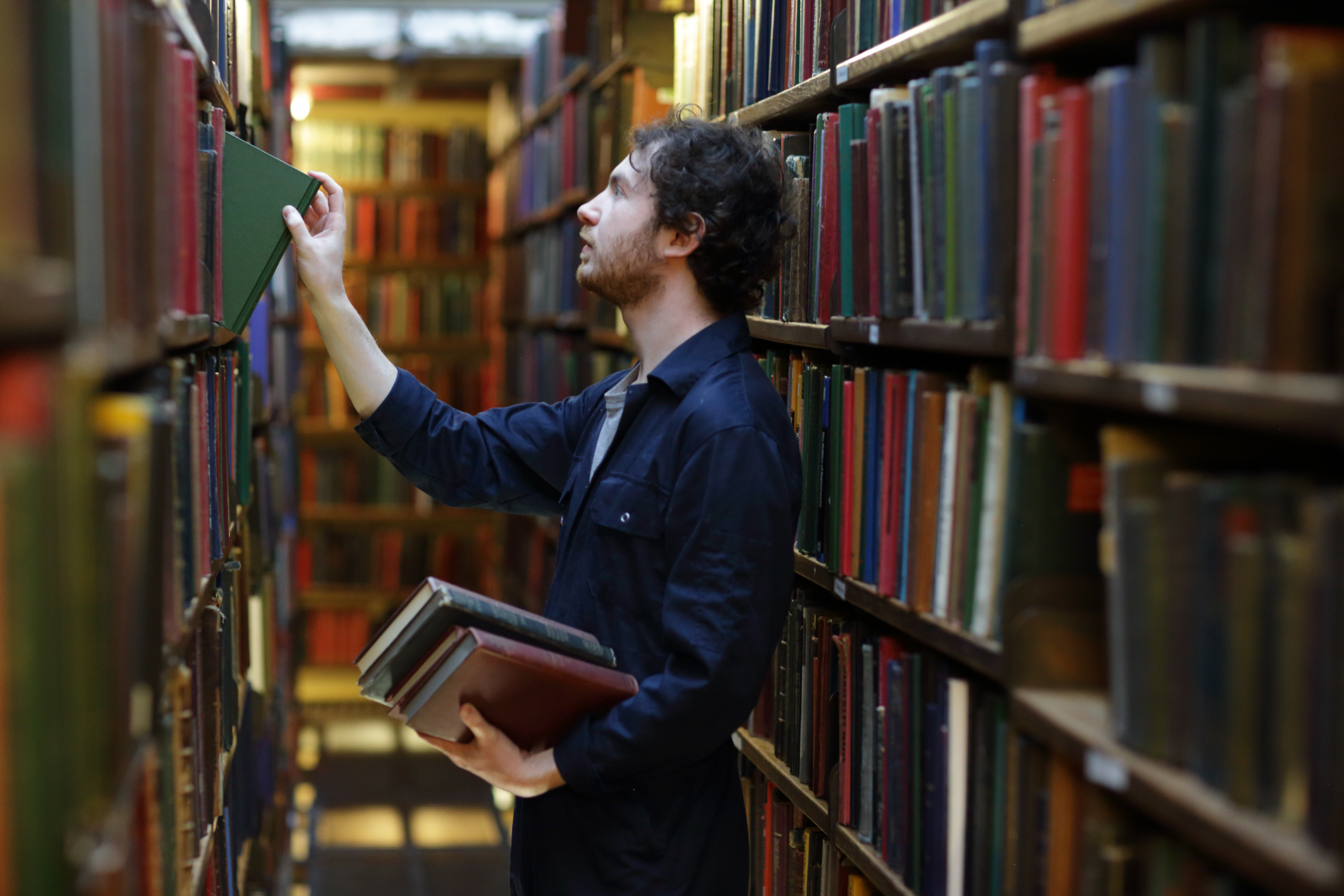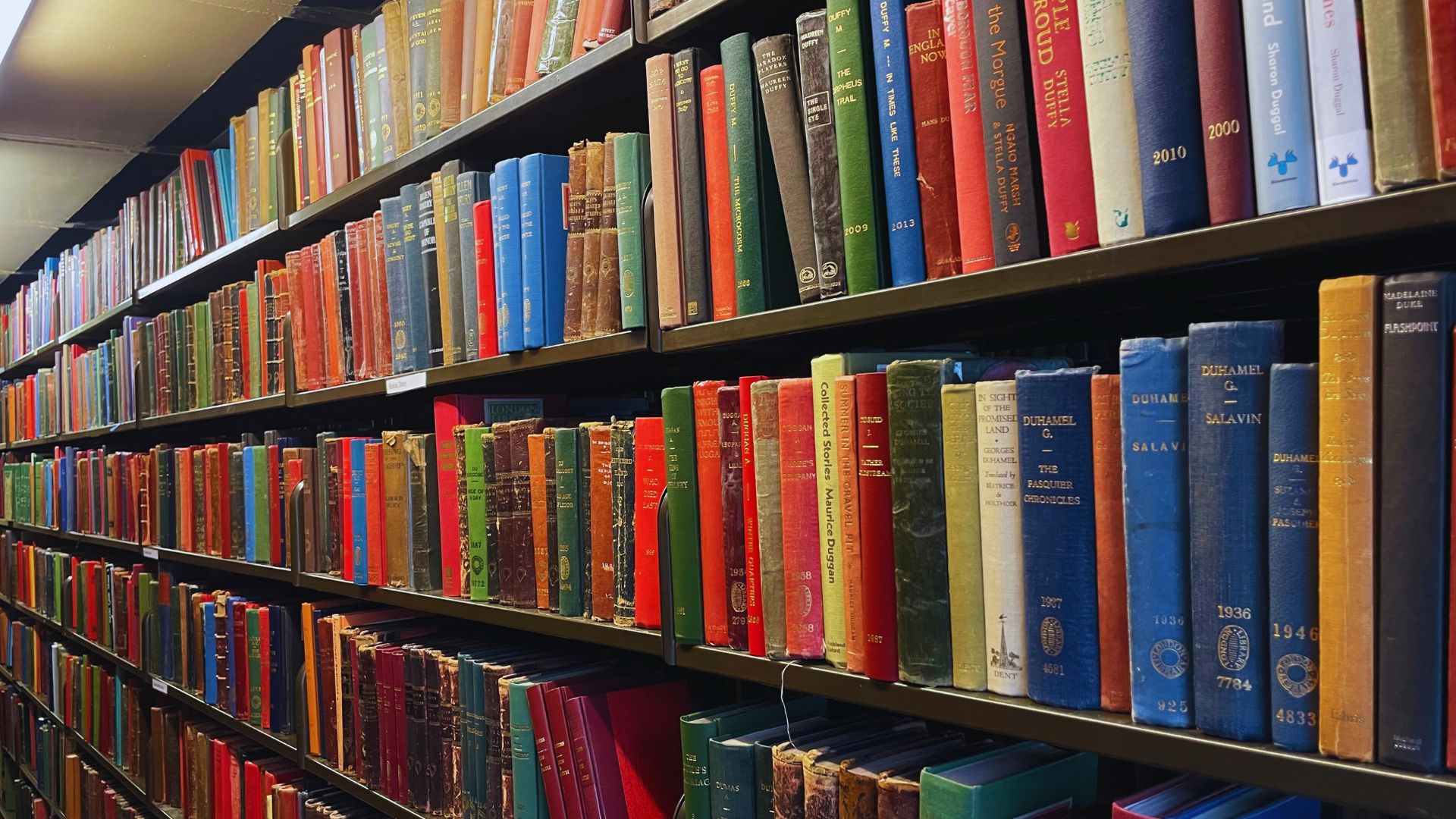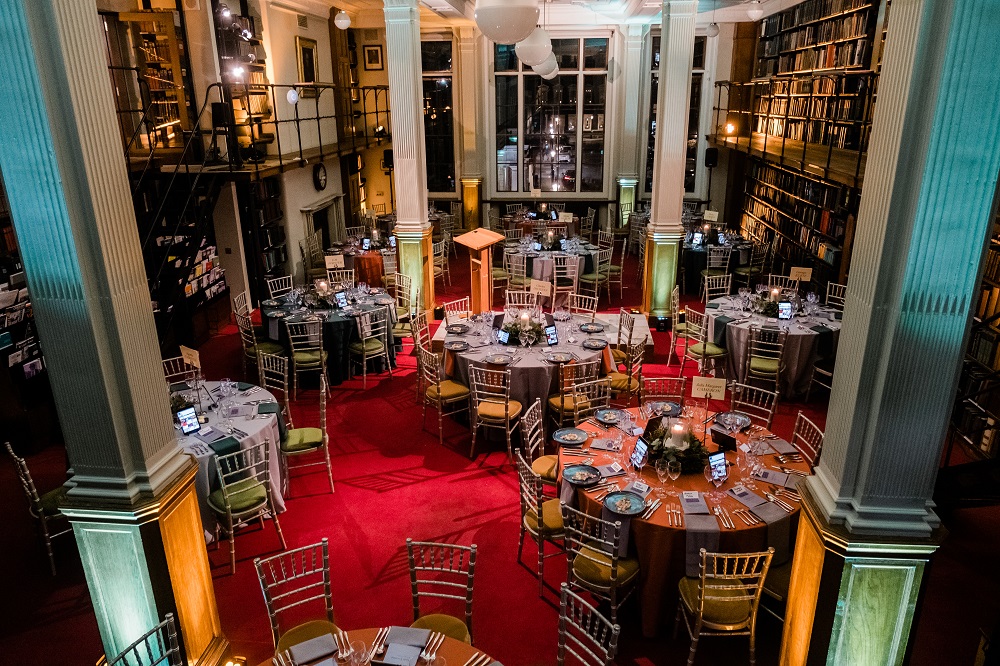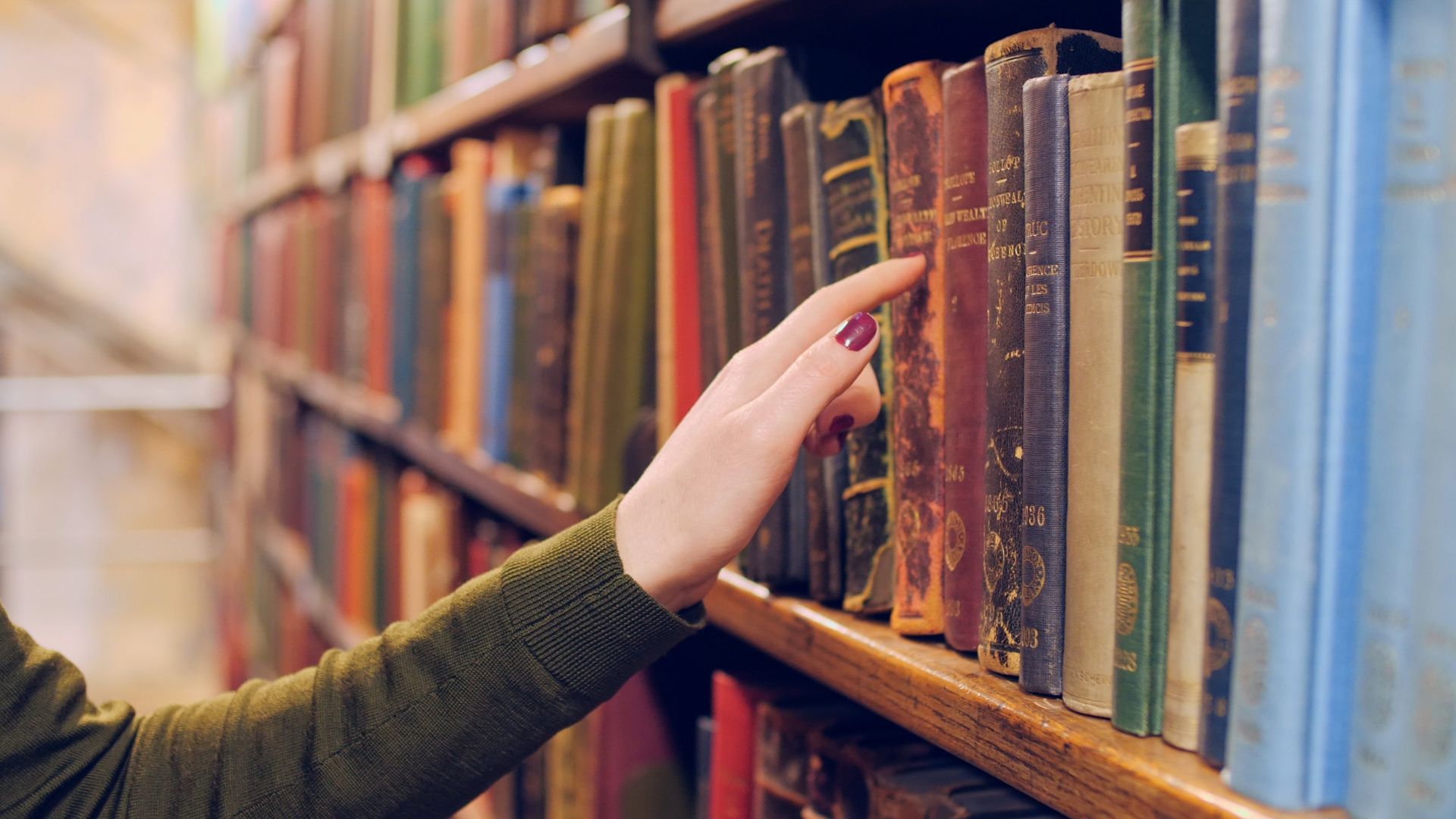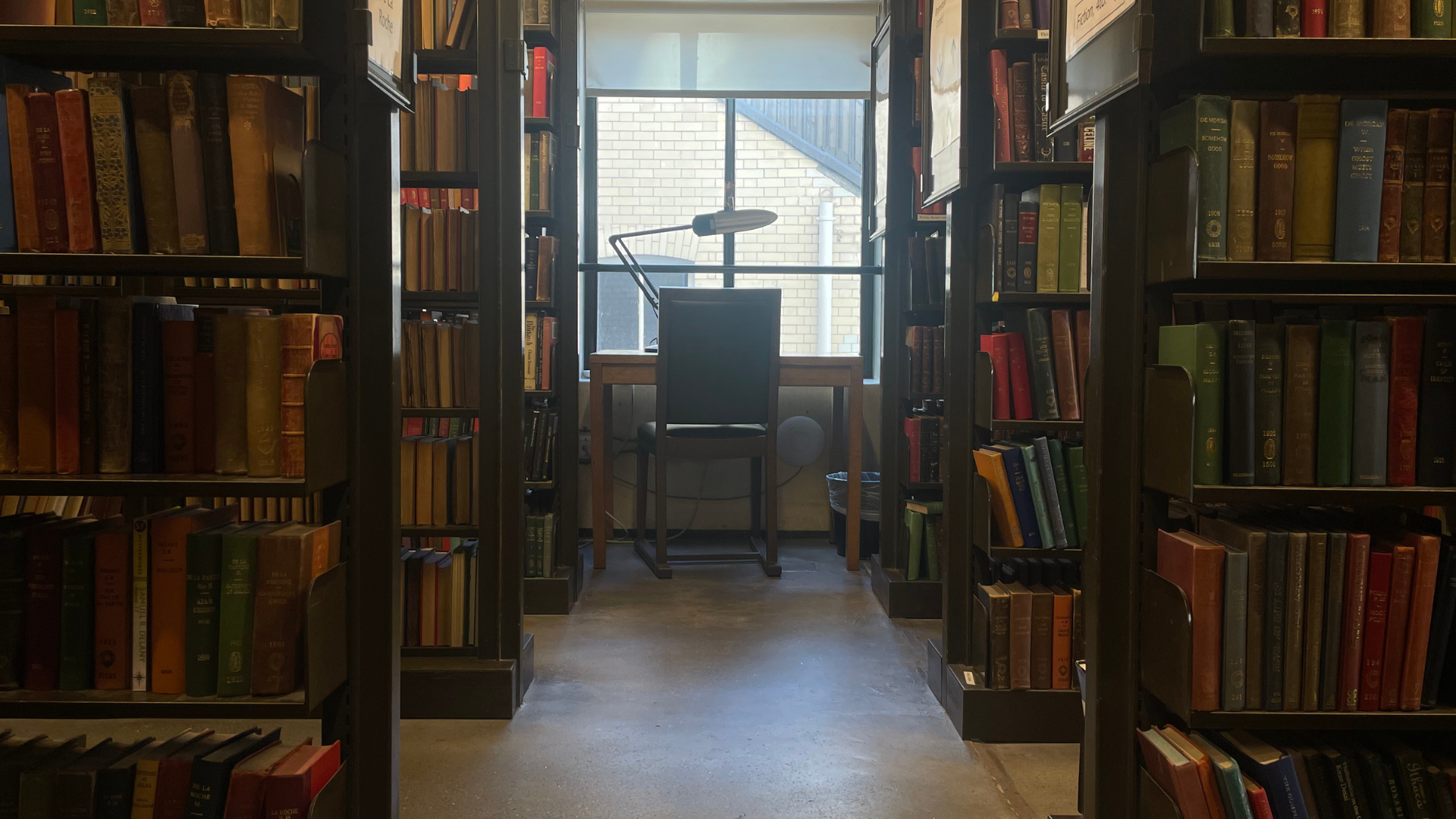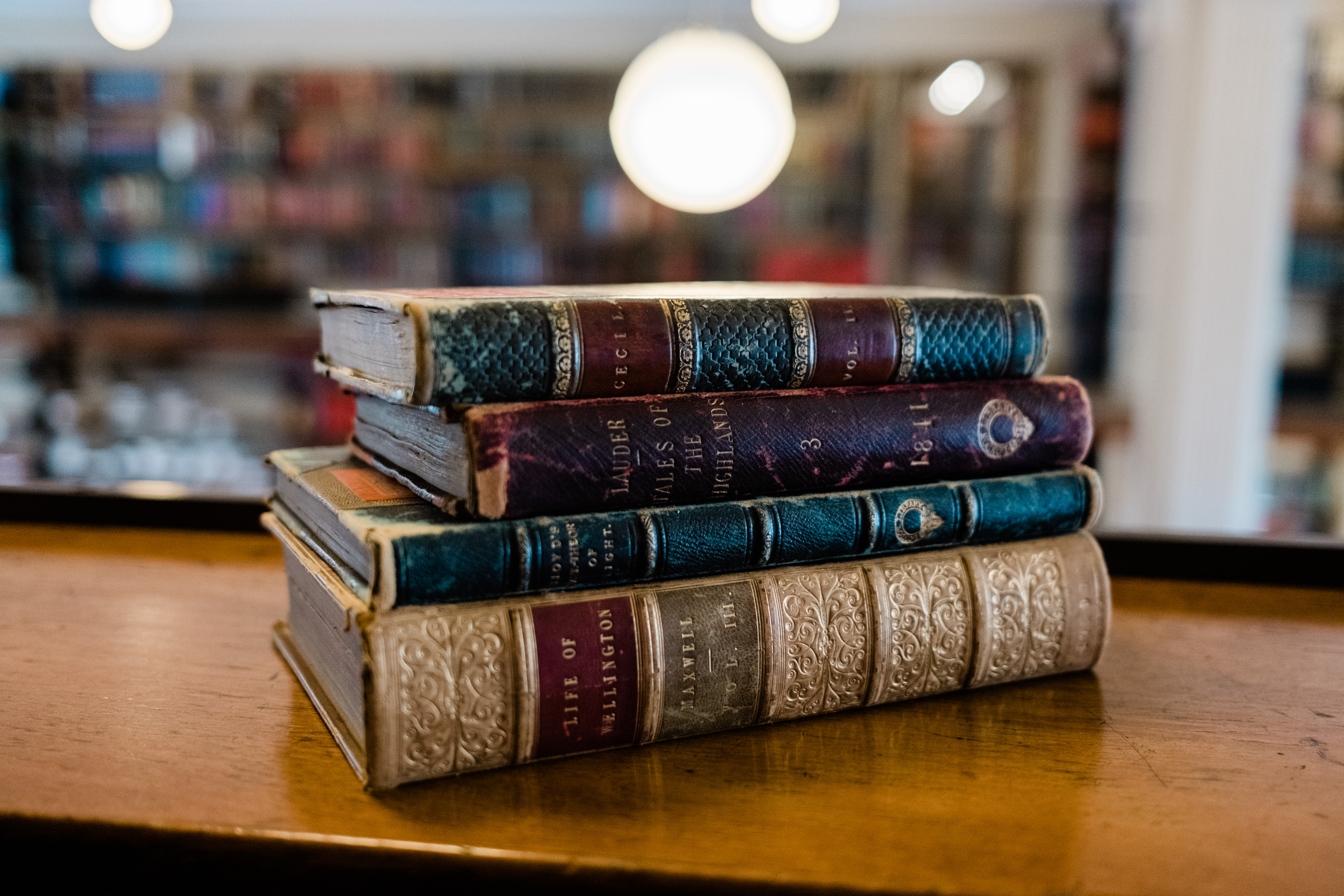In celebration of the Olympics our Head of Bibliographic Services, Dunia explores the Library’s Sports section, including the first book ever published on the modern games! The perfect way to celebrate Team GB’s first Gold medal win!
Members of the Library who want to browse the sports section need to climb up to the 6th floor of the back stacks. Upon arrival the intrepid reader will face dark metal shelves that in the gloom appear to float between aisles of green glass lit from below. A quick scan of the stack board signs will show that S. Sports &c. (the ‘&c.’ in this case stands for pastimes) naturally lies between S. Spies &c. and S. Stamps. Where else?! After musing on the possible connections between secret agents, philately and international sporting events he or she can finally take a closer a look at what S. Sports &c. has to offer.
Almost 400 books occupying thirteen and a half shelves (plus a few more volumes in the quarto sequence, which is one floor below) will satisfy the reader’s curiosity on everything from playground games to kite flying, darts, surfing, Scrabble, Olympic Games, snooker, croquet, backgammon, table tennis and even rat-catching! The reader may well wonder at the person who decided to shelve the Full Revelations of a Professional Rat-catcher, after 25 Years’ Experience under sports and pastimes. In fact, the book’s presence in this section illustrates the challenges London Library cataloguers face every day when trying to classify a book on a subject for which Sir Charles Hagberg Wright, Librarian from 1893 to 1940 and the genius behind the Library’s unique scheme, did not create a shelfmark!
Oddities aside this section is typically comprehensive, in true London Library fashion, in its treatment of the subject of sports and pastimes. The earliest book one can borrow from these shelves is a 1730 edition of Académie Universelle des Jeux, a compendium of instructions on all the fashionable games played at the court of Louis XV and Madame de Pompadour while one of the most recent ones is the Cambridge Companion to Baseball.
Some members may be surprised by the absence of books on cricket, particularly after seeing at least three other books on baseball in this section. This is far from being an unforgivable oversight, quite the opposite. As many members would agree, cricket is far too important to sit among other works in S. Sports &c and as such it has a section of its very own, S. Cricket, boasting some 260 books.
Going back to S. Sport &c. we can see that while the books shelved here were published over 300 years the period they cover is much, much broader. There are books on gladiatorial combats in ancient Rome, on sports and games in ancient Egypt, on Aztec competitions, and on chariot racing in the Byzantine Empire alongside works on French games from the 16th to the 18th centuries, on the ‘accomplishments and pastimes of the English gentleman’ from 1580 to 1630, on ‘gamesters of the Restoration’, on sport in Georgian England and on the Edwardians at play. The evolution of the subject is brought up-to-date with books on sport in the USSR and other countries behind the Iron Curtain as well as a book on the role of commercial giants like Adidas and Puma in ‘the making of modern sport’.
The geographical coverage of the section is no less impressive: in addition to books with a global coverage of the subject there are monographs on the Japanese game of “Go” and on the sports and games of the inhabitants of Abyssinia, Korea, New Zealand, Scandinavia, South Africa, the Scottish Highlands, South Carolina, Crimea and the Caucasus.
As well as covering every period and location the books in our collection deal with every possible aspect of the subject. There are sports histories as well as many narratives describing the unusual games observed by travellers journeying through foreign lands but there are studies dealing with the psychological, social, political and even erotic aspects of sports and pastimes.
The social historian will also find plenty of source material here with books on street games and pub games on the one hand; titles such as The Gentlewoman’s Book of Sport, Sport at Oxford, Cambridge and the Great Public Schools on the other and a work entitled Sport and the English Middle Classes, 1870-1914 falling somewhere in between.
Of course, this is not all that the Library has to offer on the subject of sports and pastimes. We have already seen that books on cricket merit a shelfmark of their own and the same applies to books on archery, athletics, ballooning, billiards, boxing, canoeing, chess, cycling, fencing (under S. Duelling &c.), fishing, football, gaming, golf, hockey, hunting, mountaineering, polo, racing, riding, rowing, shooting, skating & skiing, swimming, tennis, wrestling, yachting!
Still, if we want to find our books on the Olympics we need to return once more to S. Sports &c. This is where we’ll find both official reports of the modern games as well as studies on their political significance, particularly when it comes to Hitler’s manipulation of the 1936 Berlin Olympics. Other books deal with the horrific events that took place in Munich in 1972 and the tension between the Communist and Olympic ideals of Beijing 2008.
Perhaps the most fascinating of all is the first book ever published on the modern games: The Olympic Games, B.C. 776-A.D. 1896. The work in two volumes is in itself a perfect example of international cooperation. With parallel text in German and English the book was co-published in Athens, Leipzig and London over 1896 and 1897 to coincide with the first modern Olympic Games. The first volume is a history of the games in ancient times written by Spyridōn Paulou Lampros and Nikolaos Politēs with the second volume being an account by Pierre de Coubertin and Timoleon Philemon of the 1896 games celebrated in Athens. A view of the host city, including the ‘stadion’ purposely rebuilt over the ruins of the ancient arena decorates the cover and inside there are many portraits of victorious athletes, such as Aristides Constantinidhis, winner of the cycling race from Athens to Marathon and back. The image shows him balancing on his bike and sporting the obligatory handlebar moustache. The facing page is taken up by a panoramic view of the ‘stadion’ filled with spectators cheering the triumphal arrival of Marathon runner Spyridon (“Spyros”) Louis, flanked by Princes Constantine and George, who overcome by joy rushed onto the track to join the him for the last few metres. The illustration captures the moment a Greek national hero was born. Because this quite a rare work (only three others are listed on Copac at the time of writing) it now lives in one of the Library’s safes but can still be consulted under supervision.
A commemorative volume that can be borrowed is the Olympic Games London, 1948 : Official Souvenir. This was London’s second turn in hosting the games and once again there was little time for making the necessary preparations. The 1908 Games had been allocated to Rome but the plans changed at the last minute leaving London only two years to get ready for the friendly invasion. When preparing for 1948, things again had to be done in a hurry: on page 19 the booklet explains the absence of a great, specially built arena in London as ‘such a building would take many years’ planning and building and this country was, until 1945, otherwise occupied.’ The booklet, which opens with an essay on the ancient games, followed by brief histories of previous modern games includes a colour map of London showing which events will take place where. Despite being known as the ‘Austerity Games’ the colourful booklet oozes post-war optimism and a desire to let bygones be bygones: the description of the 1936 Berlin Olympics is full of gallant praise for the organisers of the German Games. Each of the events or sports included in the 1948 Games is then explained and blank tables have been printed where the owner of the booklet can write the names and scores of winning competitors. A great portion of the little volume is made up of adverts for all kinds of products, from support underwear to cigarettes, brandy, fountain pens and luxury cruises.
Near the end of the souvenir there is an explanation of what the closing ceremony will be like. It describes how the Olympic Banner will be lowered and the flame extinguished. This is the final line:
Dunia Garcia-Ontiveros - Head of Bibliographic Services


